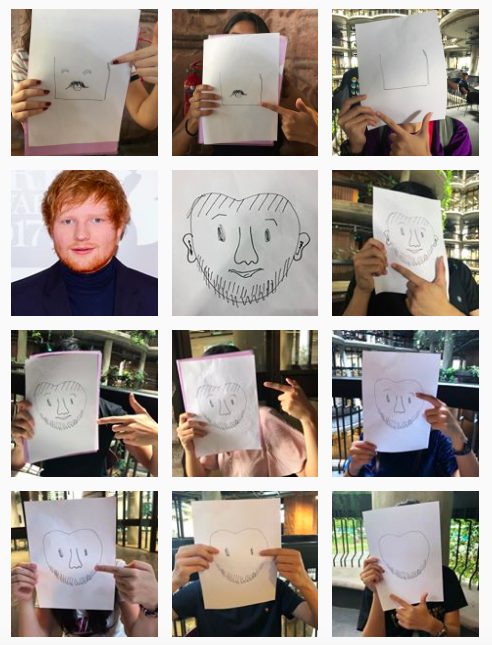Group Members:
Daphne Ngatimin, Elizabeth Quek, Francesca Nio, Yeoh Zhen Qi
Inspired by the works of Blast Theory, a UK-based performance group that creates interactive performances that engage the public community in site-specific locations, we were assigned to recreate similar collaborative performances using Singapore as our stage. We will be using the social media, Instagram as a secondary platform, with the public as participants and viewers. The performance that we create aims to stretch art into life, breaking the boundaries between the artist and the audiences while incorporating the concept of #DIWO (collaborative art).
Introducing our on-location performance project, “Play Draw Point,” which will devise a narrative that plays off interactions with strangers and the media. The players will be the artist of the game by collaboratively drawing a portrait and then associate the drawing to a “look-a-like”. The incentive that these players get is that they will become part of the performance as co-artists, creating a collaborative art piece, hence creating a sense of shared experience and community.
HOW ITS PLAYED?
- From a list of facial features we curated, the player would have to pick out one feature to draw from the box.
- Up to the player’s interpretation, he/she would have to draw out the feature which was chosen – starting from the face shape.
- The drawing would then be passed to the next player (another stranger) until the drawing is completed.
- After each drawer’s turn, they would have to take a picture with the drawing and point towards a specified direction such that the pictures would link up on our secondary platform, Instagram. If we are rejected in participation, we will upload a blank black space representing the glitch in our project- breaking the narrative.
- At the end of each portrait, another player would be required to guess the identity of the drawing based on their own interpretation, regardless if it a celebrity, cartoon character or even someone they know.
The drawing/list of features written down does not lead to a specific identity, as such the interpretation of the drawing is fully dependant on the player to create an interesting association with one. This shows how the brain is malleable, in a way it associates objects/people with certain links. Another interesting point is that the players become part of the art work and the artists to curate the drawing. Each of them have different drawing skills and interpretation which allows the drawing to be ‘glitched’ and morphed into an individuals interpretation – whether it becomes a cartoon drawing or a portrait, or even an unguessable form!
Test Run (ADM)
In order to ensure there are no failures or actual bumps of the project on the actual day, we decided to have a short trial in ADM – without telling them anything, which leaves them to their own interpretation as well.
PROJECT PLAY DRAW POINT:
On the day of the actual experimental project, we went off around NTU, looking for players to become co-artists. At the end, we obtained 6 complete drawings, involving approximately 60 players in total!
In order to document and to show the small add ons of each drawing, the players along with their drawing are uploaded to our Instagram. Moreover, to give the players an idea of the game, our Instagram page was also given to them in order for them to understand the whole game and narrative of the project.
https://www.instagram.com/letsplaystrangerthings/
TO Conclude, the way we curated our project was giving the control to the players, being co-artists and creators of the game itself. It is up to them to glitch it up and down. One thing that I caught my attention was that the phenomenon of a linkage of glitch. For example, when someone rejected us, there will be a higher rate of upcoming rejection (glitch). In a way our project has been influenced by a lot of telematic art that uses collaborative art and leaving the outcome to the players – such as Yoko Ono’s cut piece, Douglas Davis’s World’s Longest Collaborative Sentence, Ken Goldberg’s Telegarden or even the exquisite glitch micro project. Our final project has explored the idea of the social practice in including the audiences into the piece, making it an interactive experience that included both ourselves and the audiences, as co-artists! Creating a community of artists that anyone can be a part of!




